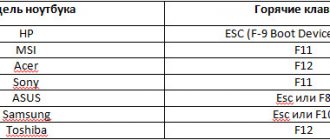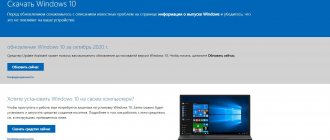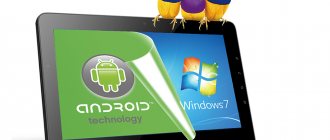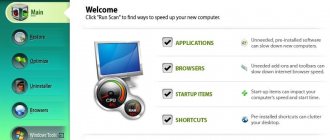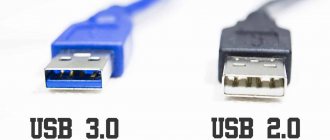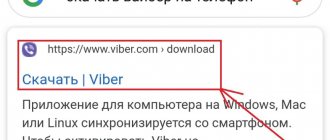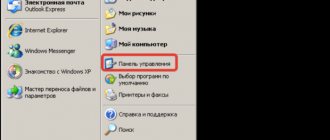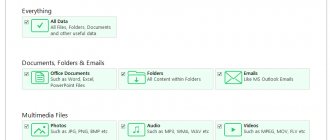Installing Windows 10 on Mac is quite simple. The Boot Camp utility is designed for this, which even a user who is far from high technology can handle. She will walk him through several steps, which will be enough to get another operating system on his computer. After this process is completed, when you start your Apple computer, you will be asked to choose which OS you want to use at the moment: the current version of macOS or Windows 10. It’s a pity that working with Boot Camp is not available to everyone.
Telegram channel of the creator of Trashbox about technology
Telegram channel of the creator of Trashbox about technology
The fact is that the most popular and in-demand Mac format is portable MacBook laptops. Apple uses fairly fast, but very expensive memory in them. Not everyone spends money on increasing it when buying a computer, so users have plenty of machines with 128 or 256 GB of storage. This may be enough to fully use macOS. However, when installing Windows 10 via Boot Camp, you will have to cut off a significant chunk of files that will be available to the new operating system. With a 128 GB laptop this is almost impossible, with a 256 GB laptop it is extremely uncomfortable.
It would be nice if you could use an external drive for Windows 10 and connect it as needed. But Boot Camp can’t work in this way. Additional manipulations will be required, which will be discussed in these detailed instructions.
What you will need to install Windows 10 on an external drive:
- A flash drive of at least 4 GB, but more is possible.
- An external drive is better than USB 3.0, or even better - an SSD. You can use a regular internal SSD in a special USB case.
- Boot Camp app on supported devices:
- MacBook (2015) or later;
- MacBook Air (2012) or later;
- MacBook Pro (2012) or later;
- Mac mini (2012) or later;
- iMac (2012) or later;
- iMac Pro (all models);
- Mac Pro (2013) or later.
- The application for creating virtual machines VirtualBox is free.
- Disc image with Windows 10 installation files in ISO format - link to official¹.
- Non-Apple mouse and keyboard for initial setup of Windows 10².
- You may also need a hub to connect additional devices - to set up Windows 10 after installation, you need at least three USB ports.
➀ I
I recommend using the official version of Windows 10 and not even thinking about builds. This will help avoid many problems - for example, the inability to install drivers for the full operation of a Mac running the Microsoft operating system.
➁ If you are using any Apple computer with a mouse and keyboard made by the same company or built into a MacBook, they will not work within the Windows operating system until you install drivers for them - this is one of the last steps of this instruction.
You will need:
- Mac computer with an Intel processor (2007 or newer) with the latest Mac OS updates installed.
- Windows OS ISO image and license key.
- Blank USB drive (if you want to install Windows from external media).
- Free hard drive space: 55 GB or more for installation via Boot Camp.
- Parallels, VMware or VirtualBox program for installing a virtual system.
Prepare an external drive for installing Windows 10
The external drive you choose to use Windows 10 with your Mac needs to be prepared to install the new operating system on it. To do this, you need to format it using standard macOS tools and select the correct data processing scheme.
Attention: keep in mind that all the processes described in this paragraph will delete absolutely all data located on the external drive.
Step 1: Connect the external drive to your Mac.
Step 2: Open the standard Disk Utility application.
Step 3: Go to the View menu and select the Show all devices option.
Step 4. Select the drive that will be used to install Windows 10 in the application side menu - the drive, not the volume that is part of it.
Step 5. Click on the "Erase" button in the top bar of the application.
Step 6: Select a name for the external drive in the Name field - for example, "WIN10".
Step 7: Select the “MS-DOS (FAT)” option from the “Format” drop-down menu and “GUID Partition Scheme”³ from the “Scheme” drop-down menu.
Step 8. Click on the “Erase” button.
Step 9. Wait for the operation to complete.
The external drive now uses the MS-DOS file system (FAT) and GPT partition scheme instead of MBR.
➂ If you do not change the partition scheme to GPT, you will not be able to install Windows 10 to work fully on a Mac through the standard choice of disk to run. In this case, you will be able to use the operating system only from under the virtual machine, and this is slow and inconvenient.
Oracle Virtualbox
VM VirtualBox is a virtualization tool from Oracle. A free application that will allow you to run Windows 7 or 10 without a separate installation on Mac or BootCamp. The functionality is not as rich as Parallels Desktop, but this solution is free and will allow you to use 2 systems simultaneously. What is needed for this:
- Download and install VM VirtualBox for OS X hosts from the official website.
- Download the image of the desired system, for example “Ten”
- Create a new virtual machine. Enter name, type and OS version
- Set the amount of RAM
- Set the storage capacity for the virtual machine and specify the disk type as VDI (VirtualBox Disk Image)
- Once the virtual machine is created, click on Settings.
- In the “Storage” tab, specify the path to the image of the loaded OS, and then launch the virtual machine.
- The standard system installation procedure will begin. You can find out about the procedure in the paragraph about Boot Camp.
As you can see from this article, it’s quite easy to install Windows 7, 8 or 10 instead of Mac OS, you just need to choose the option that’s convenient for you. Using the full power of the device, but putting up with only one active OS, or taking full advantage of all the advantages of Windows and MacOS, but with minor performance losses.
Prepare a USB flash drive to save Mac drivers
Similar to an external drive for a future operating system, the flash drive must also be formatted using standard Mac tools to be suitable for use with the Windows operating system. You need a file system that works on both it and macOS.
The external drive will be used in the future to regularly run Windows 10 when you need software that is not available on macOS. A flash drive will only be needed to install drivers for working with Apple hardware on a new operating system.
Attention: keep in mind that all the processes described in this paragraph will delete absolutely all data that is on the flash drive.
Step 1: Connect the USB flash drive to your Mac.
Step 2: Open the standard Disk Utility application.
Step 3. Select the USB flash drive that will be used to store Windows 10 drivers from the application side menu.
Step 4. Click on the "Erase" button in the top bar of the application.
Step 5: Select a name for the external drive in the Name field - for example, "WIN10DR".
Step 6: Select the “MS-DOS (FAT)” option from the “Format” drop-down menu.
Step 7. Click on the “Erase” button.
Step 8. Wait for the operation to complete.
The flash drive now uses the MS-DOS (FAT) file system.
➃ If you don’t have a suitable flash drive at hand, you can theoretically do without it. However, in this case, you will need the Tuxera Disk Manager application, which gives the Mac the ability to work with the NTFS file system. It is this that will ultimately be used on an external drive with Windows 10, and drivers for this OS can be loaded onto it from under macOS.
Download Windows 10 Drivers via Boot Camp
Boot Camp is an Apple proprietary utility that is designed for convenient installation and further use of the Windows 10 operating system on Mac computers. Even a child can handle it, but it is not needed in its pure form - we use only one of its functions.
For the purpose of this material, Boot Camp will only be needed to download drivers that will help connect Windows 10 with hardware manufactured by Apple. The fact is that this utility can install the system only on the internal disk of a Mac. I repeat, it “bites off” the necessary space from it, which will be used in the future with another system. This is comfortable when using Mac storage of 512GB, 1TB or more. If you have only 128 or only 256 GB, it is better to put Windows 10 on an external drive. This is why Boot Camp is only needed to download drivers⁵.
Step 1: Open the Boot Camp app.
Step 2: Go to the Action menu.
Step 3: Select the "Download Windows Support Software" option.
Step 4. Determine the location to save the drivers - the “WIN10DR” flash drive (if you used this name).
Step 5. Click on the “Save” button.
Step 6. Wait for the operation to complete.
After the operation is completed, the flash drive will contain the WindowsSupport folder with all the necessary files.
➄ To download the latest software (drivers) for running a Mac on Windows 10, you need the latest version of Boot Camp. It updates with macOS, so it's best to install the latest version through System Preferences > Software Update.
Final stage
Typically, the installation process does not take much time and lasts from 15 to 20 minutes. Frequent reboots of the operating system are possible due to the installation of the most necessary drivers. You must agree to all terms of use at the final stage.
This completes the step-by-step installation instructions, but lastly I have prepared several interesting and useful points.
Install VirtualBox and determine the external drive ID
At this point, you already have a formatted disk that is ready to install Windows 10, as well as a flash drive with all the necessary drivers. Now you need to trick Boot Camp and the operating system installer into thinking that the external storage is internal. This can be done using Parallels or VMware Fusion, but I will use the VirtualBox application. This decision, by and large, is determined only by cost - the last utility is freely available, and for the first two you will have to pay. Actually, the choice is obvious.
Step 1. Download VirtualBox from the link - you need to select the version for the Apple operating system.
Step 2: Install the VirtualBox application.
Step 3: Launch the standard Terminal application.
Step 4: Type “diskutil list”⁶ and press Return(⏎) to display a list of disks used on your Mac.
The list will also include an external drive with the MS-DOS (FAT) file system, which you, if you followed the recommendations, named “WIN10”.
Step 5. Write down the ID of the external drive that is listed in the IDENTIFIER column - in this case it is “disk2”.
Step 6. Now you need to remove the drive logically, but leave it physically connected - to do this, find it in the Finder application and select the “Eject” option in the drive’s context menu.
➅ Here and further, commands for the “Terminal” must be entered without quotes - use only what is between them.
Bottom line
Practice shows that Apple still produces the best laptops in the world. Reliable, powerful, lightweight, energy efficient. But even if the Windows world doesn't let you go, all is not lost. Apple took care of the user and provided him with an amazing opportunity to use Windows on a Mac, if necessary.
If you have never reinstalled an operating system in your life, much less installed several operating systems on one computer, Boot Camp will still not let you get confused. You won’t even have time to get scared - a minimum of questions and Boot Camp will already start working. Well, if you are an experienced geek, then you will certainly be surprised by the simplicity and ease of the process. Although, it is worth noting that not every geek is able to appreciate the simplicity and ease.
See also:
- 8 things to do immediately after installing Windows 10 on Mac
Map an external drive for use with VirtualBox
Step 1: Open the Terminal app.
Step 2: Use the command “sudo VBoxManage internalcommands createrawvmdk -filename bootcamp.vmdk -rawdisk /dev/disk2”⁷.
Step 3: Confirm that you want to use the command using your Mac Administrator account password.
A virtual disk, bootcamp.vmdk, will be created in the home folder of the system user you are currently using. You can now use VirtualBox to install Windows 10 on an external Mac drive.
➆ “disk2” is the identifier that I received in the previous paragraph of this instruction. If yours is different, just replace it within this command.
Creating a flash drive
After the image has been downloaded, open the bootcamp program. With its help, you can easily clean your USB drive and efficiently record your image on it. Do not forget that before recording, all important files from the flash drive must be moved, since a little later all information from the media will be completely deleted.
Create a virtual machine to install Windows
Step 1: Open the Terminal app.
Step 2: Use the command “sudo /Applications/VirtualBox.app/Contents/MacOS/VirtualBox” to launch the VirtualBox program with elevated permissions.
Step 3: Confirm that you want to use the command using your Mac Administrator account password.
Step 4: Select the New option from the VirtualBox toolbar.
Step 5: Enter a name for the virtual machine in the Name field - for example, WIN10.
Step 6: Select the "Microsoft Windows" option from the "Type" drop-down list.
Step 7: Select the “Windows 10 (64-bit)” option in the “Version” field.
Step 8: Click the Continue button.
Step 9: Use the default amount of RAM and click Continue.
Step 10: Select the “Use existing virtual hard disk” option.
Step 11. Click on the button with the image of a folder to the right of the virtual hard disk selection field.
Step 12. Click on the “Add” button.
Step 13. Select the bootcamp.vmdk file in your account’s home folder and click on the “Open” button⁸.
Step 14. Click on the “Select” button.
Step 15. Click on the “Create” button.
Step 16. Select the virtual machine you just created in the left side menu, go to the “Configure” section, expand the “System” menu and turn on the “Enable EFI (special OS only)” switch⁹, confirm your intention with the button "OK".
Step 17. Select “Optical drive” in the “Media” section and select the Windows 10 disk image that you downloaded at the beginning of this material using the “Select disk file” button.
➇ If you get an error in this step that says the bootcamp.vmdk file is busy, then you didn't eject the external drive through Finder in one of the previous steps - just do that and try again. The error might look like this:
Could not open the medium '/Users/kirillakovlev/bootcamp.vmdk'.
VD: error VERR_RESOURCE_BUSY opening image file '/Users/kirillakovlev/bootcamp.vmdk' (VERR_RESOURCE_BUSY).
➈ Like choosing a GPT partition scheme, this is a vital step to continue running Windows 10 from an external drive without using a virtual machine. By the way, without GPT, EFI technology will not work - the system will complain that the external drive is using MBR. It will indicate the error “Windows cannot be installed on this disk. The selected disk contains an MBR partition table. On EFI systems, Windows can only be installed on a GPT disk."
Install Windows 10 on an external drive using VirtualBox
Click on the "Run" button on the VirtualBox application bar. Once done, choose to run from optical drive and Windows 10 will automatically install on your Mac's external drive. Follow the onscreen instructions to complete it. The installer will tell you that the external drive needs to be formatted with the NTFS file system, do so.
Attention: when the screen prompts you to restart your computer to complete the installation, immediately close the VirtualBox virtual machine window - otherwise nothing will work. At this point, the operating system has already copied all the necessary files and will complete the installation on its first launch.
Allocating space for Windows
After starting the Windows installation process, the system will prompt you to select a location for the operating system. In cases when you need to save OC X, simply divide it into several parts, leaving 50-100 gigabytes for Windows 10. Never forget one interesting fact - after completing this step, you will not be able to resize the disk for Windows in the future. The only solution to the problem, perhaps, will be the use of additional software that can cope with this rather complex task.
Obtain permissions to run the system from an external drive
Apple tries to protect macOS as much as possible so that an inexperienced user cannot accidentally disrupt its stable operation. Nevertheless, the company leaves interesting opportunities for enthusiasts, which we are trying to use today. At this step, we allow the loading of third-party OSes without restrictions¹⁰.
Step 1: Enable Restart Mac.
Step 2: When the screen goes dark, press Command(⌘) + R to go to the Mac Tools Menu.
Step 3: Enter your account password and go through other Apple authentication methods to confirm that you want to make the necessary changes.
Step 4: Go to the Utilities menu and launch the Secure Boot Utility application.
Step 5: Enable the “Security features disabled” radio buttons in the “Secure Boot” section and “Allow booting from external or removable media” in the “Allowed boot media” section.
➉ If you don't do this, you'll get the error "You need to reinstall the version of macOS on the selected drive" when you try to use an external drive to run Windows 10 on your Mac.
Boot your Mac using external storage
To select a drive to boot the operating system on a Mac, you need to hold down the Option(⌥) key while restarting your computer. Then options will appear on its screen, from which you need to determine the external drive with Windows 10, which you were able to create within the framework of these instructions.
If there is no external drive in this menu that is connected to the computer, then you did something wrong. To understand which step the error occurred, look at the italic numeric footnotes that are associated with the most important steps in the instructions.
Switching between systems
- When you start your computer, you need to press and hold the Option key for a while.
- Then the system selection window will appear.
- You must select macOS or Windows 10.
- If you need to switch to another platform, you need to restart your MacBook and select the OS again.
Roman Vladimirov, Apple product expert, manager of pedant.ru. Consultant for the site appleiwatch.name, co-author of articles. Works with Apple products for more than 10 years.
Install drivers for Windows on Apple computers
After selecting the external drive to boot, the Windows 10 logo will appear on the screen, the system will finish the installation, during which another reboot may occur (you will need to use “Option(⌥)” again to select the boot drive). After that, she will ask you to go through the initial setup.
Already at this step you will need the most ordinary mouse and keyboard, which will have to be connected to the Mac, since Windows 10 cannot yet work with standard Apple ones (neither built-in nor external). You can get by with just a mouse if you use the virtual keyboard option through the accessibility menu.
The final step in setting up Windows 10 to work correctly on a Mac will be installing the drivers located on the flash drive that was created above. Connect it, go to the BootCamp folder and run the Setup.exe application, which will install all the necessary software, as administrator .
If your Apple mouse, keyboard, or trackpad doesn't work after installing Windows 10 on your Mac, you'll need to update their drivers manually using Device Manager. Problematic ones are marked with exclamation marks. It is enough to mark them, activate a manual search for drivers and specify the corresponding folder on the flash drive. It will immediately pull up the missing files.
My impressions of using Windows 10 on an external drive
I tested the circuit on a basic processor and RAM 2022 MacBook Air running macOS 10.15 Catalina. The role of the disk was taken by an external 1 TB HDD from Samsung with a connection via USB 3.0 - not the fastest solution today to use it to install the operating system. However, for occasional use of Windows 10 on a Mac, this is more than enough. The OS may not launch very quickly, and also works at a “seven” on a scale of ten, but this turned out to be enough. The ideal option would be an SSD with a Thunderbolt 3 connection.
It took several days of trial and error, as well as the help of the site team, to create this instruction. There are similar guides on other resources on the Internet, but they are full of errors that lead you on the wrong trail. Be sure to pay attention to the digital footnotes throughout the text and let it all work out.
